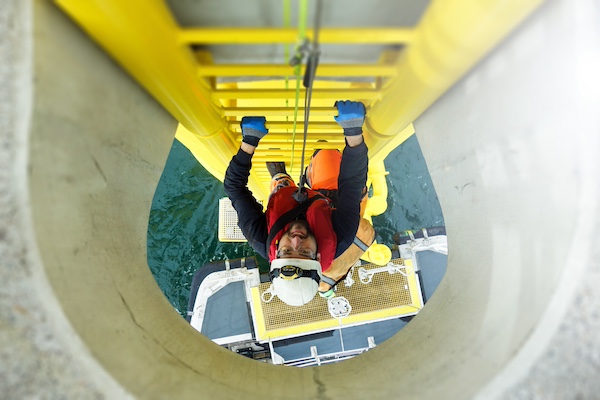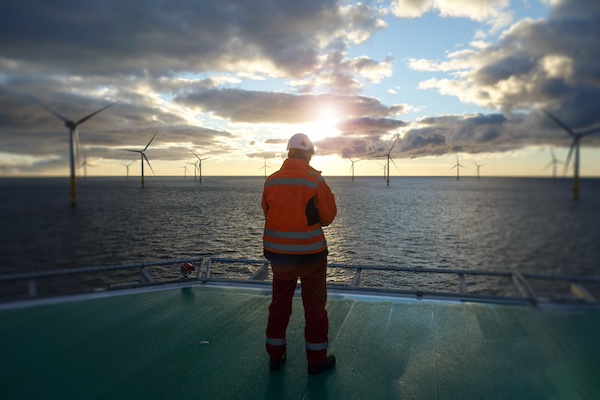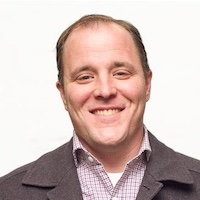America’s Big Wind Ambition – How operators can keep workers safe offshore in 2024
The Biden administration’s plan to increase offshore wind generation by installing 30 gigawatts of capacity by 2030, is the target central to its plans to slash carbon pollution. While the timeline for delivery is contentious among operators and within the supply chain, the target remains the driver behind massive expansion across both the Atlantic and Pacific shorelines; the Department of Energy estimates that the offshore wind industry could need up to 58,000 jobs per year from 2024-2030 if the local supply grows as planned.
To grow, protect, and sustain that workforce, organizations need to seriously consider their safety and medical provision as a critical foundation for operations.

A bespoke approach
The diversity of the U.S coastline means each potential development location will have unique safety challenges that will need to be addressed. The West Coast, for example, features much deeper waters, which means that a large percentage of any offshore wind development will have to rely on floating offshore wind due to the steep drop-off of the Outer Continental Shelf. Floating structures require a more complex and extended build phase, along with more significant onshore port infrastructure to support and sustain them.
From the minute offshore projects begin construction, facilitating on-site medical and technical support is one of the most robust ways operators can help to ensure worker safety in these remote locations. Offshore medics have the capacity to respond to even the most severe cases, and are fully equipped to tackle both emergencies and general injuries and illness that takes place offshore. Operators should refrain from commissioning on-site support that adopts a one-size fits all policy, and instead opt for medical solutions that look at the location and tailor the provision of medical assistance to the needs of the workers offshore.
General on-site support will likely cover the majority of adverse situations workers will face offshore, but taking a more bespoke approach will help to ensure that the workforce is protected from any adverse issues and help them to feel supported and secure while they work onsite.
Prevention is key
Treating injuries and ailments when they have already taken place offshore can be incredibly costly, and many operators are already investing in preventative measures to minimise the risks of illness or injury. One way that employers can do this is to facilitate a pre-screening process to save operations from potential disruption; offshore workers with pre-exiting illnesses or other health factors can lead to increased risks for themselves, their teams, and has the potential to cause delays in operations due to sickness or injury.
By investing in recognized global safety and quality standards, such as the Offshore Energies UK (OEUK) medical, employers can ensure that individuals are medically fit to work offshore in remote, austere environments. When delivered in conjunction with other tests such as the Chester Step Test, these evaluations can effectively assess the fitness of staff to work offshore.

Onsite and topside support
Since calling 911 is simply not an option out to sea, having on-site medical support services that include medical providers, medical equipment, and supplies, along with the back-end structures to support the on-site providers, is essential. These medical facilities ideally need to be embedded into an on-site clinic to help limit the number of cases that require referral for further off-site medical care, saving time and resources, and reducing personnel downtime.
In order to respond to more severe cases, the emergency medical skills of offshore medics need to involve more than advanced wound care training – they should also have knowledge of what intervention is best for the patient while keeping recordable cases to a minimum. The remoteness of a windfarm presents its own challenges in terms of administering care to injured or ill workers who may be located on top of a turbine, and this is where organizations should consider hiring medical staff who are highly trained and experienced in being able to treat patients working at height in offshore environments.
Mental health support
Supporting the wellbeing of the workforce offshore remains a key priority as the industry continues to drive cultural change in how it champions mental health support. Organizations should implement mental health programs to ensure that all employees are educated on the benefits of leading a healthy lifestyle while living and working in these challenging environments. By adopting small but simple practices of self-care, from optimal sleep and a varied and wholesome diet, to regular exercise and avoiding excessive phone use between shifts, these can all help to support worker wellbeing and reduce injuries or accidents caused by mental fatigue or exhaustion.
Beyond medical staffing
Ensuring the safety of the workforce on windfarm projects often extends beyond medical staffing. Many operators may also require safety and technical personnel to supplement the workforce, and will need to consider recruiting expert personnel including Health, Safety and Environment (HSE) advisors and medics, Wind Turbine Technicians, or even specialist Dual Role Medics who are trained in both of these roles.
As the offshore wind industry grows, it’s important for operators to carefully assess how tailored medical support services can be put in place from the very beginning of offshore projects to keep the workforce safe in 2024. The global experience and solutions of trusted medical providers need to be utilized to bring the best medical support to the workforce in order to harness the potential of this critical clean energy source.
 Chris Murff is Vice President of Global Sales, RMI, which delivers technical, medical and security solutions to companies and governments around the world. The company has offices in the Americas, UK and Africa, and has been recognized six times by Inc. 5000 as one of the fastest-growing companies in the United States. RMI works with Fortune 100 corporations and governments.
Chris Murff is Vice President of Global Sales, RMI, which delivers technical, medical and security solutions to companies and governments around the world. The company has offices in the Americas, UK and Africa, and has been recognized six times by Inc. 5000 as one of the fastest-growing companies in the United States. RMI works with Fortune 100 corporations and governments.
RMI | rmiglobalsolutions.com
Author: ris Murff
Volume: 2024 March/April








